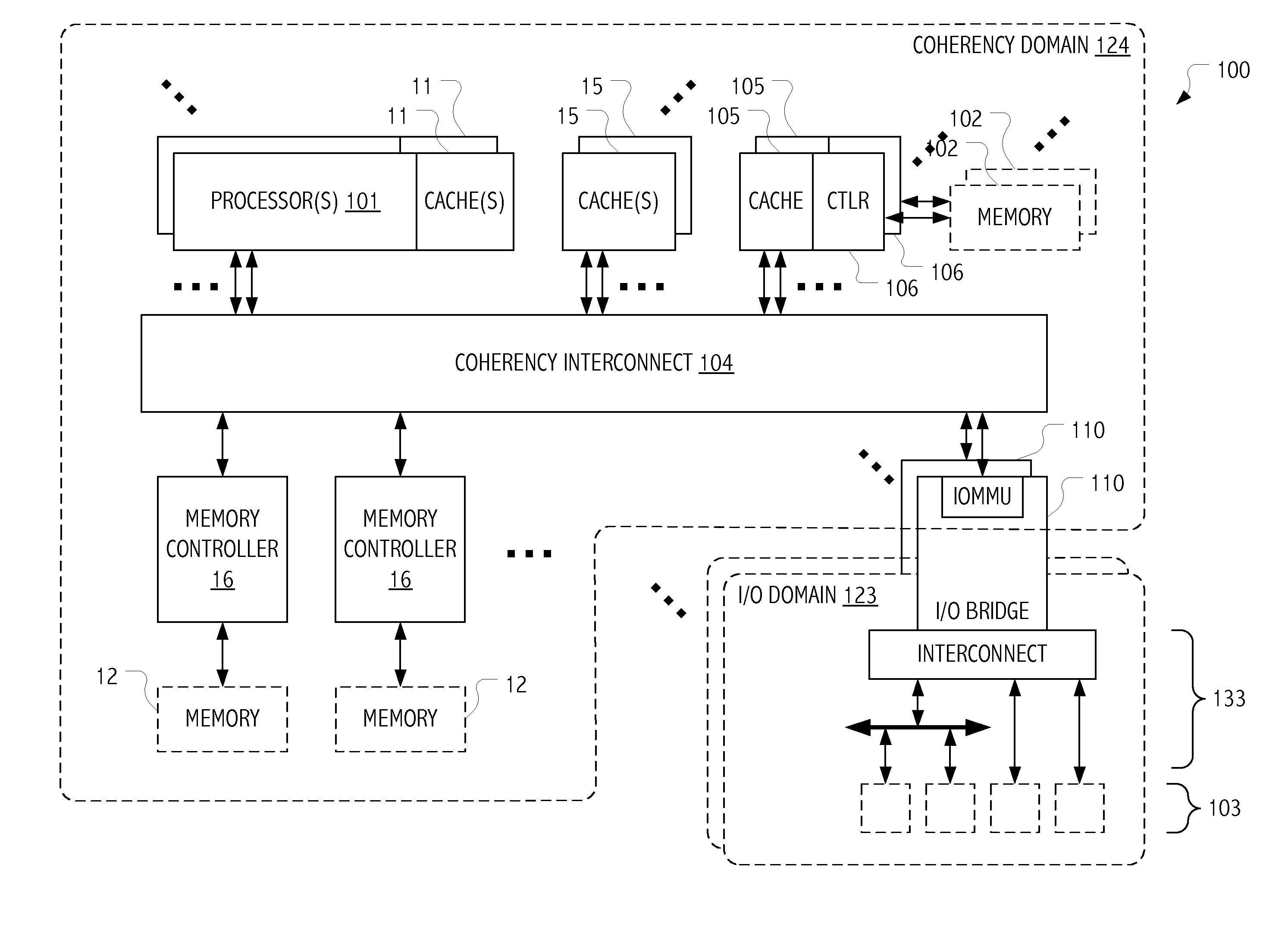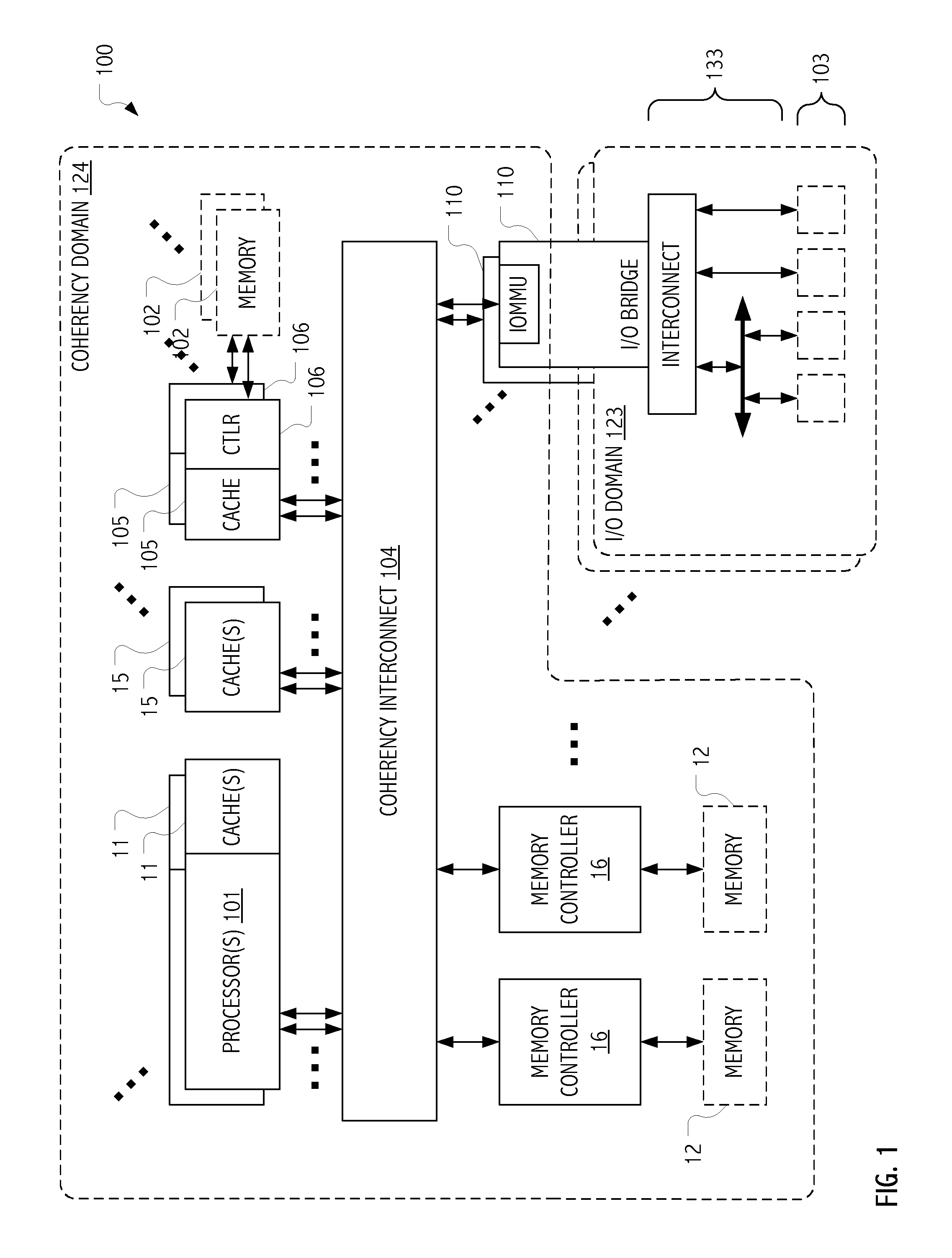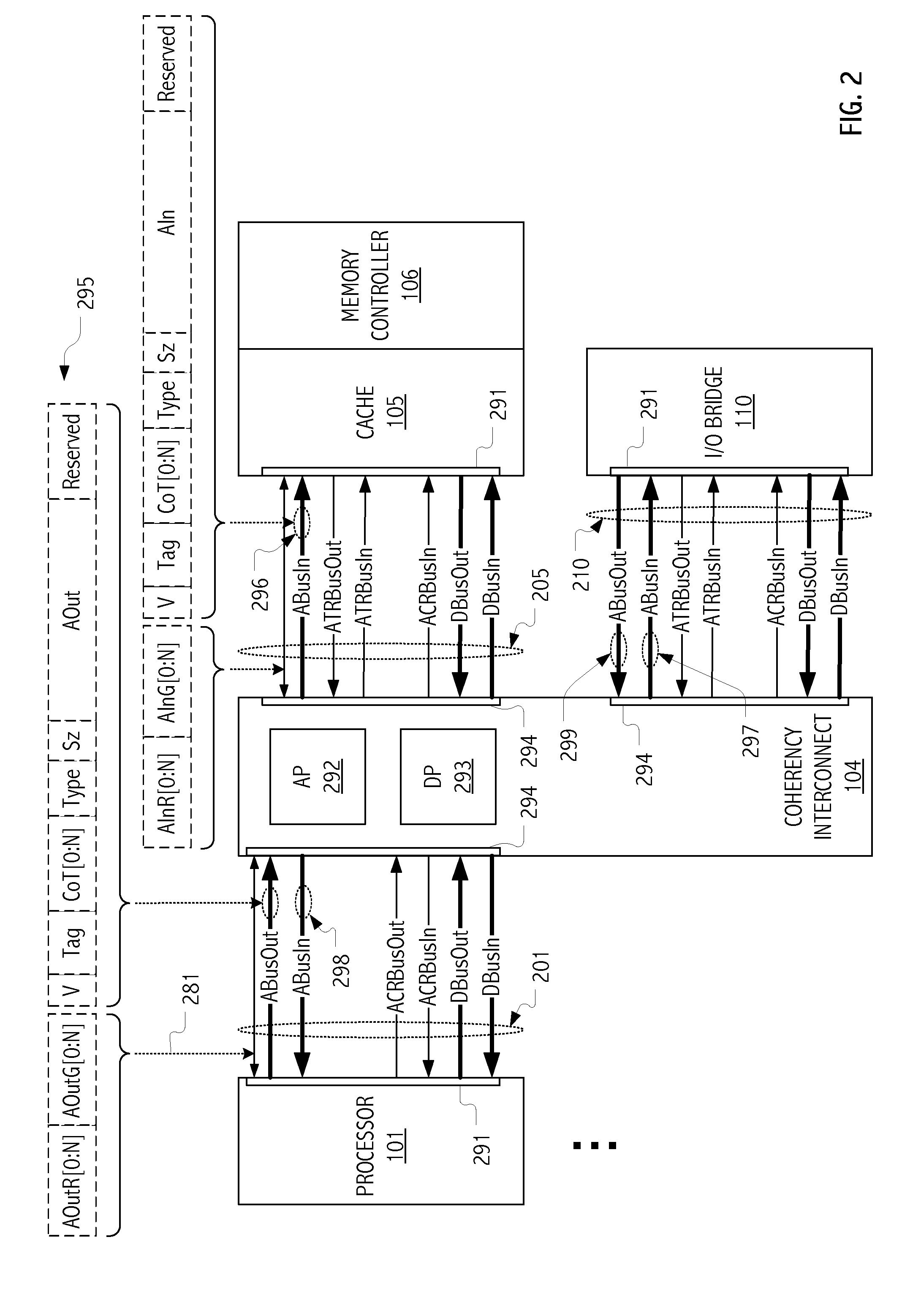Flow Control Mechanisms for Avoidance of Retries and/or Deadlocks in an Interconnect
a flow control and interconnection technology, applied in the field of data processing systems, can solve problems such as the possibility of deadlock and the very difficult to debug scenarios
- Summary
- Abstract
- Description
- Claims
- Application Information
AI Technical Summary
Problems solved by technology
Method used
Image
Examples
Embodiment Construction
[0015]Flow control mechanisms have been developed to avoid, and in some situations or embodiments eliminate, retries of transactions in a coherency interconnect. In particular, a class of transaction (CoT) framework is defined whereby individual transactions are associated with CoT labels consistent with chains of dependencies that exist between transactions initiated by any of the cooperating devices (e.g., processors, targets and interveners) that participate in a given operation. In general, it will be understood that coherency protocols create dependencies that, when mapped to physical resources, can result in cycles in a graph of dependencies and deadlock. To support architectural mechanisms for deadlock avoidance, CoT labels are applied to individual transactions consistent with a precedence order of those transactions both (i) with respect to the operations of which such transactions are constituent parts and (ii) as amongst the set of such operations supported in the coheren...
PUM
 Login to View More
Login to View More Abstract
Description
Claims
Application Information
 Login to View More
Login to View More - R&D
- Intellectual Property
- Life Sciences
- Materials
- Tech Scout
- Unparalleled Data Quality
- Higher Quality Content
- 60% Fewer Hallucinations
Browse by: Latest US Patents, China's latest patents, Technical Efficacy Thesaurus, Application Domain, Technology Topic, Popular Technical Reports.
© 2025 PatSnap. All rights reserved.Legal|Privacy policy|Modern Slavery Act Transparency Statement|Sitemap|About US| Contact US: help@patsnap.com



